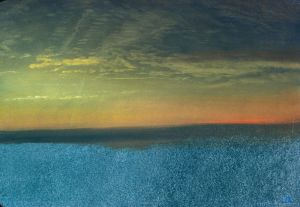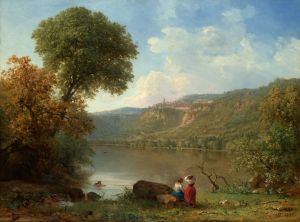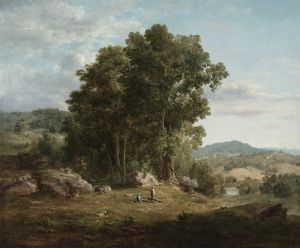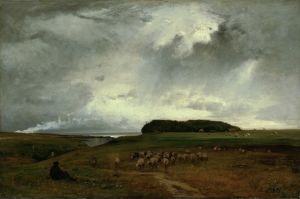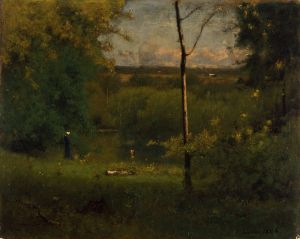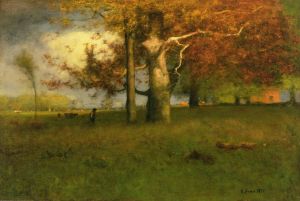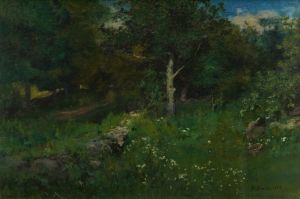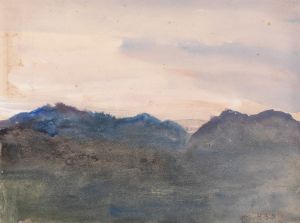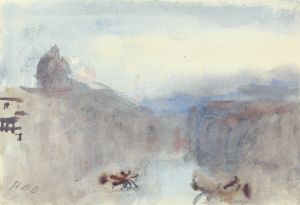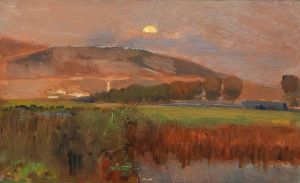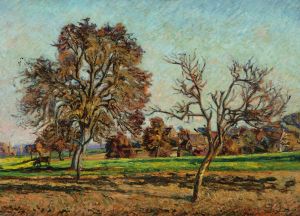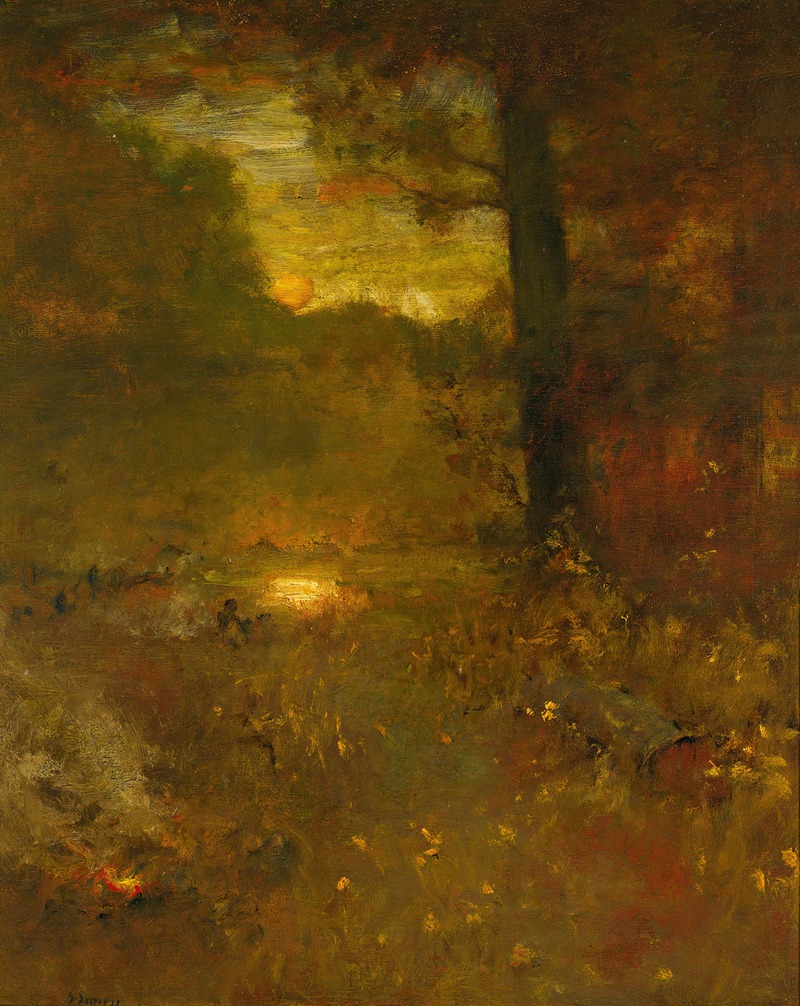
Landscape At Sundown; The Close Of Day
A hand-painted replica of George Inness’s masterpiece Landscape At Sundown; The Close Of Day, meticulously crafted by professional artists to capture the true essence of the original. Each piece is created with museum-quality canvas and rare mineral pigments, carefully painted by experienced artists with delicate brushstrokes and rich, layered colors to perfectly recreate the texture of the original artwork. Unlike machine-printed reproductions, this hand-painted version brings the painting to life, infused with the artist’s emotions and skill in every stroke. Whether for personal collection or home decoration, it instantly elevates the artistic atmosphere of any space.
George Inness was an influential American landscape painter, born on May 1, 1825, in Newburgh, New York. He is often associated with the Hudson River School, although his style evolved significantly throughout his career, eventually aligning more closely with the Tonalist movement. Inness is celebrated for his ability to convey mood and atmosphere in his landscapes, often drawing inspiration from the natural world and his spiritual beliefs.
"Landscape at Sundown; The Close of Day" is one of Inness's notable works, exemplifying his mature style that emphasizes mood and the interplay of light and shadow. This painting reflects Inness's interest in capturing the transient effects of light during the twilight hours, a theme he explored frequently in his later works. The painting likely dates from the latter part of his career when he was deeply influenced by the philosophical teachings of Emanuel Swedenborg, a Swedish theologian whose ideas about the spiritual world resonated with Inness.
Inness's approach to landscape painting was distinct from his contemporaries. While the Hudson River School artists often focused on detailed and grandiose depictions of nature, Inness sought to evoke a more intimate and emotional response. His use of soft, diffused light and a more subdued color palette in "Landscape at Sundown; The Close of Day" creates a sense of tranquility and introspection. This technique aligns with the Tonalist movement, which emphasized mood and atmosphere over precise representation.
The composition of "Landscape at Sundown; The Close of Day" is characterized by its harmonious balance and subtle gradations of color. Inness often employed a technique known as "scumbling," where thin layers of paint are applied over a dry underlayer, allowing the colors to blend and create a luminous effect. This method is evident in the painting's depiction of the sky and landscape, where the warm hues of the setting sun merge seamlessly with the cooler tones of the approaching night.
Inness's work was not only a reflection of his artistic skill but also his philosophical beliefs. He saw art as a means to express the divine presence in nature, a concept influenced by Swedenborgianism. This spiritual dimension is palpable in "Landscape at Sundown; The Close of Day," where the serene landscape invites viewers to contemplate the beauty and mystery of the natural world.
Throughout his career, Inness received recognition and acclaim for his contributions to American art. He exhibited widely, both in the United States and internationally, and his works are held in numerous prestigious collections, including the Metropolitan Museum of Art and the Art Institute of Chicago. Inness's legacy endures as one of America's foremost landscape painters, whose innovative approach and spiritual depth continue to inspire artists and art enthusiasts alike.
"Landscape at Sundown; The Close of Day" remains a testament to Inness's mastery of landscape painting, capturing the ephemeral beauty of nature and the profound sense of peace that can be found in the quiet moments of the day.







